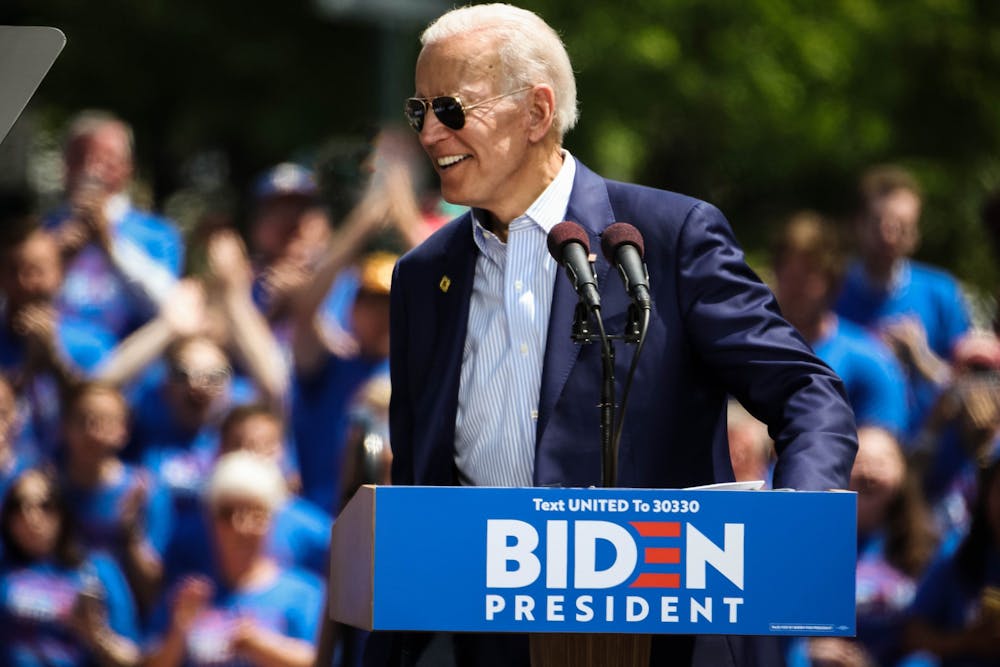Through my limited exposure to Penn, I’ve been surprised by the progressive influence on campus. Growing up in the Northeast, liberalism was the norm. However, in a recent class discussion on "The Communist Manifesto," I found it striking to see that the overwhelming majority of my peers supported some form of socialist ideology. If you’ve spent any time on social media, a college campus, or in downtown New York City, you’d believe there was mass support for packing the Supreme Court and decriminalizing illegal border crossings. What we define as American “liberalism” seems to have shifted from increased social liberties to expansive government regulation, or at least in the eyes of the coastal mainstream.
The media shared this understanding. Any channel you turned to in the weeks prior to the election projected a “blue wave” spanning from Congress to the White House. Former Vice President Joe Biden was projected to beat President Donald Trump by 7.4 percentage points, what would be a “sweep,” and yet only won the popular vote by only about 3 percent. The Democratic majority in the House of Representatives was supposed to increase by 10-20 representatives, and yet Republicans picked up seats. Similarly, Democrats were expected to flip several Republican Senate seats and spent $315 million to do so. However, they only picked up two seats and lost another to Republicans. As Nov. 3 has come and gone, we’re all asking ourselves: where was the blue wave?
This is not going to be another editorialized slander of the polling industry. In fact, in an election where many people expressing support for the president fell victim to cancel culture, pollsters were faced by a number of unprecedented variables to take into consideration. However, in light of the slander of Republican senators for their role in the appointing of Supreme Court Justices Brett Kavanaugh and Amy Coney Barrett, the multiple impeachment investigations of the president, and the accusations against conservative congressmen for not signing onto progressive policy, these results were surprising to most of us.
The answer is that the Democratic Party and many of its supporters have lost touch with much of America. In the increasingly leftward movement of individual representatives and the party as a whole, they lost a big chunk of the moderate vote. Republicans down the ballot, all across the country, made one thing clear in their 2020 campaigns: they were the party of “anti-socialism”, “small government” and “freedom.” With 79% of Americans saying that the economy is their most important voting issue and health care following at 68%, it seems as though the Democratic Party's movement to increase taxes and implement single-payer health care isn’t sticking with most Americans. The American public responded accordingly to that message, and it would behoove the Democratic Party to listen.
As Penn students, we’re often isolated in the progressive “bubble” of academia. We believe that the public shares the ideological socialist push which has been supported by college students for decades. This election is a reminder that every single one of us needs to try to understand the perspective of the average American, a reckoning that may give us a much better idea of what policy should look like.
Moderate members of the Democratic Caucus share these opinions. Earlier in the week, centrist Democratic House members called for a possible change in party leadership, even recommending the removal of Speaker of the House Nancy Pelosi from her position. At the first caucus meeting since the election on Thursday, many moderate Democratic representatives lashed out at party leaders for subscribing to progressive agendas. House Majority Whip Jim Clyburn (D-S.C.)and Rep. Abigail Spanberger (D-VA.) most notably spoke out against Medicare for All and calls to “defund the police” claiming that the proposals will continue to cost them more and more races if they don’t get “back to basics”. Following President Trump’s impeachment hearings, one Democratic representative, Jeff Van Drew, even chose to switch parties, citing what he saw as the Democrats' move from “liberal to radical”.
There has also been progressive pushback against Democratic leadership. Representative Alexandria Ocasio-Cortez (D-NY) recently chided the Democratic Party for losing Latino support in Florida and Texas, likely a result of the Democratic Party’s stance on the economy. Progressives like AOC, however, claim that the losses were not a result of the leftward movement of the party and in fact a response to the stagnancy of moderates. The playground “blame game” being played on Capitol Hill makes it clear how divided the Democratic Party is.
Even in the microcosm of Penn’s college campus, these divisions are evident. The University has one major right-leaning group, Penn College Republicans, and three left-leaning groups: Penn Democrats, Penn Young Democratic Socialists of America, and Penn Justice Democrats. I’ve seen countless Penn students who self-identify as leftists, progressives and democratic socialists express vehement distaste for the Biden-Harris ticket and the establishment Democrats. While this is not to say there are no factions within the Republican Party, members of the party have been able to sacrifice parts of their agendas in an effort to gain a big-tent coalition.
SEE MORE FROM LEXI BOCCUZZI:
When casting your vote, consider candidates as pragmatic policy makers
The temperature of political discourse is in the hands of the people
So, where does this leave the Democratic Party? The country has spoken and the American people seem locked in on the classical definition of liberalism. The party needs to come to terms with the real “mandate” of the voters if they want to see a “blue wave” in the future. While Democrats won the presidency, establishment Republicans led President Trump down the ballot. Most Americans don’t want socialism. They want a thriving economy, small government, less divisiveness, and more freedom.
Learning ideological thought at universities can be beneficial to studying history, philosophy, and political science. However, both the students and professors at universities like Penn must not lose touch with the realities of the American experience. Outside the isolation of coastal cities and college campuses, America isn’t embracing leftism.
LEXI BOCCUZZI is a College first-year student studying Philosophy, Politics and Economics. Her email address is abb628@sas.upenn.edu.









